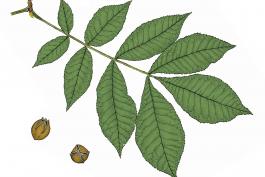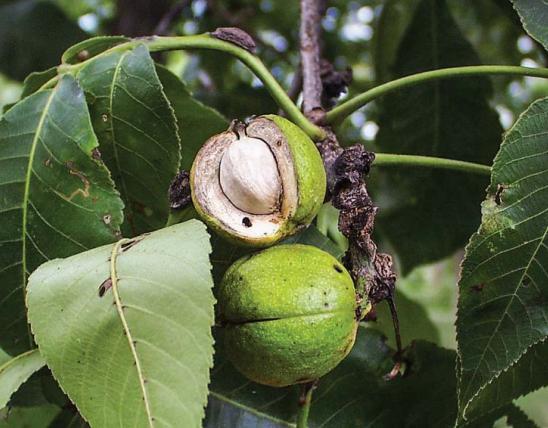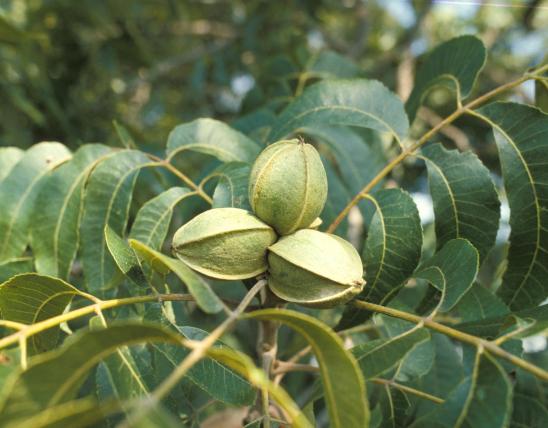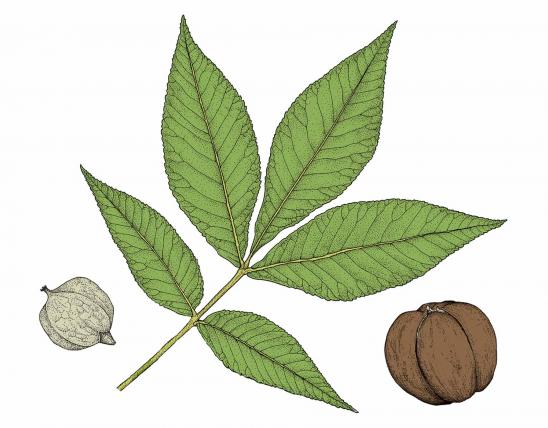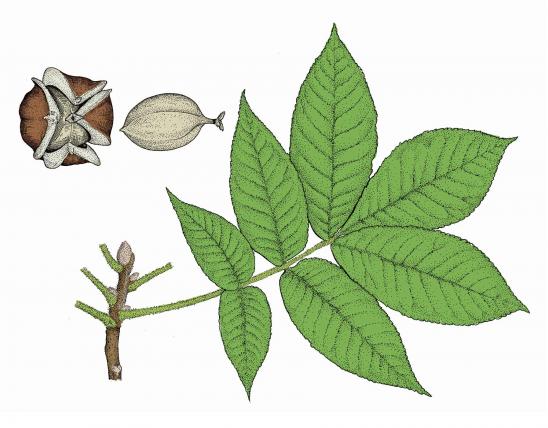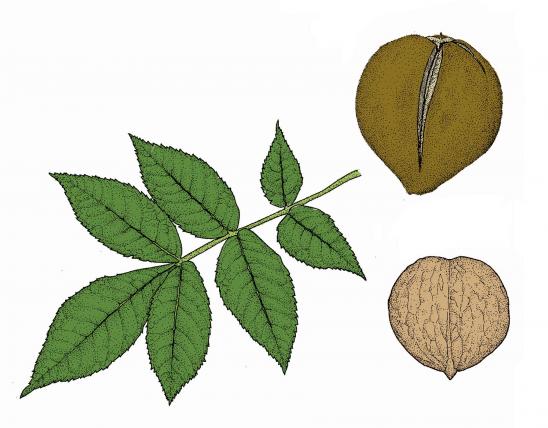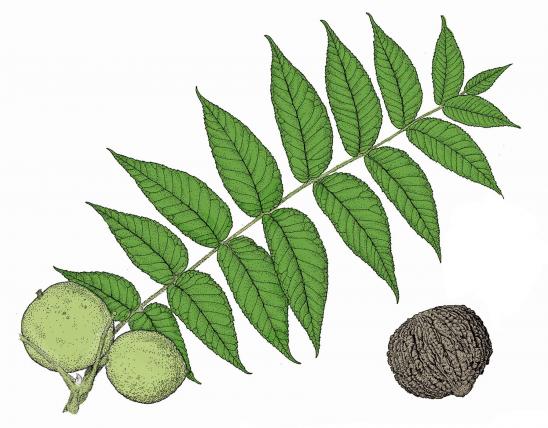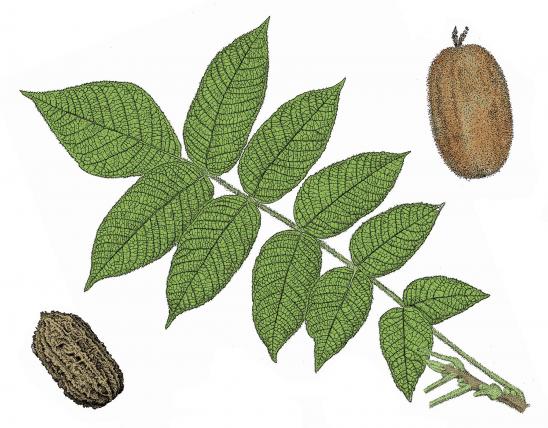
Bitternut hickory is a medium-sized tree with a long, clear trunk and broad, spreading crown.
Leaves are alternate, pinnately compound, 6–12 inches long, with 7–9 elliptical, toothed leaflets. Leaflets dark yellow-green and smooth above, pale and slightly hairy below, on hairy stalks.
Bark is smooth and light gray when young, shallowly grooved with thin, flat, interconnecting ridges with age, not becoming scaly or shaggy.
Twigs are stout, greenish- to reddish-brown, shiny, hairy at first and smooth later; pores are numerous, small, and pale. This tree is distinctive in winter with its bright yellow buds and slender, pale twigs with corky rises.
Flowers April–May. Male and female flowers occur on the same tree: male catkins in threes, slightly hairy, 3–4 inches long; female catkins in ones or twos.
Fruits September–October, solitary or paired nuts, nearly globe-shaped, covered by a thin yellow-green husk with yellow scales, partly winged along the lines where it splits. Nut tip is sharp. Kernel is bitter.

Habitat and Conservation
Human Connections
Ecosystem Connections



